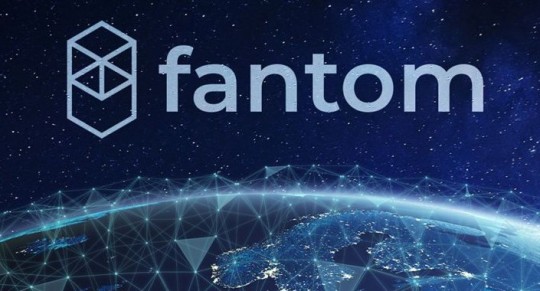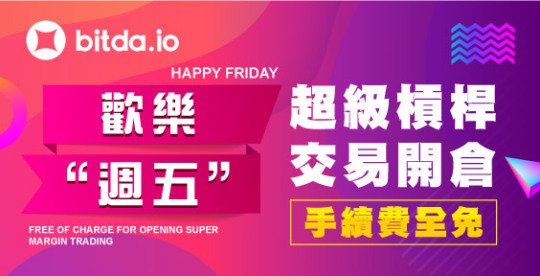#bitda
Explore tagged Tumblr posts
Text
10 Flaws of Relying Solely on EBITDA Multiples for Acquisitions

EBITDA (Earnings Before Interest, Taxes, Depreciation, and Amortization) multiples are widely used as a quick and straightforward method for valuing businesses during acquisitions. While EBITDA provides valuable insights into a company's operational performance, relying on it exclusively can lead to critical errors. Understanding its limitations is crucial for making well-informed acquisition decisions. Below, I’ll outline ten significant flaws of depending solely on EBITDA multiples and why a broader approach is necessary.
1. Ignores Capital Expenditures
One of the most glaring issues with EBITDA is its exclusion of capital expenditures. These are funds required to maintain and grow operations, particularly in capital-intensive industries like manufacturing or utilities. Ignoring these expenses creates an incomplete picture of the company’s financial health. A business with high EBITDA but significant capital expenditure requirements might appear more attractive than it truly is, potentially misleading acquirers.
For instance, a manufacturing company may report a high EBITDA, but if it consistently spends a substantial portion of its earnings on equipment upgrades, the free cash flow (a more accurate measure of profitability) may be much lower.
2. Overlooks Working Capital Needs
Working capital is the lifeblood of any business, as it determines the company's ability to manage short-term obligations and operational liquidity. EBITDA fails to account for the working capital requirements that vary significantly across industries. Businesses with extensive inventory or receivables may require more capital to sustain operations, making their EBITDA appear more favorable than warranted.
When evaluating a potential acquisition, understanding the company’s working capital needs ensures you have a realistic view of its cash flow dynamics. Ignoring this factor could lead to liquidity challenges post-acquisition.
3. Excludes Non-Operating Items
EBITDA focuses solely on core operational performance, excluding non-operating items like interest, taxes, depreciation, and amortization. While this makes it easier to compare businesses, it ignores crucial financial realities. For instance, companies with high debt levels may have significant interest expenses that are entirely excluded from EBITDA.
When assessing a company for acquisition, non-operating items like these can materially impact the bottom line and should not be overlooked. A high EBITDA does not necessarily translate into strong net profits or healthy financial stability.
4. Susceptible to Accounting Manipulations
EBITDA is not governed by strict accounting standards, making it vulnerable to manipulation. Companies can adjust accounting policies to inflate EBITDA figures, creating an illusion of better financial performance. Common tactics include aggressive revenue recognition or underreporting expenses.
This lack of standardization means that an acquirer relying solely on EBITDA may fall victim to overvaluation. Performing detailed due diligence to verify the legitimacy of reported figures is essential to avoid this pitfall.
5. Lacks Standardization Across Industries
Industries differ significantly in how they calculate and interpret EBITDA, making comparisons across sectors challenging. A tech company may capitalize certain expenses that a retail business might treat as operating costs, leading to inconsistencies in EBITDA calculations.
Without a standardized framework, comparing EBITDA multiples across industries or even between competitors in the same sector can result in inaccurate conclusions. Acquirers must tailor their valuation approach to account for these discrepancies.
6. Doesn’t Reflect Debt or Liquidity Risks
EBITDA omits debt levels and liquidity, two critical factors in assessing a company’s financial health. A business with high debt may still show strong EBITDA, masking the potential risk of insolvency. Liquidity issues, such as the inability to meet short-term obligations, are also ignored.
Acquirers should analyze a company’s balance sheet alongside EBITDA to get a clearer picture of its debt position and liquidity. Ignoring these aspects could lead to acquiring a business that struggles to sustain itself financially.
7. Sensitive to Interest Rate Changes
For companies with significant debt, fluctuations in interest rates can materially impact their financial performance. EBITDA does not account for these changes, leaving acquirers blind to the potential risks associated with interest rate volatility.
For example, in a rising interest rate environment, companies with variable-rate loans may experience increased interest expenses, reducing their net profitability despite stable EBITDA. This underscores the importance of considering financial leverage when using EBITDA as a valuation tool.
8. Overlooks Growth Potential
EBITDA focuses exclusively on current earnings, ignoring a company’s future growth potential. This limitation is particularly problematic for high-growth businesses or those with scalable models. Such companies might reinvest most of their earnings into growth initiatives, resulting in a relatively low EBITDA.
When acquiring a business, it’s important to consider qualitative factors like market opportunities, innovation, and management expertise, which EBITDA alone cannot capture. Ignoring these aspects could result in undervaluing a company with significant upside potential.
9. Ignores Tax Implications
Tax liabilities are a significant cost for any business, yet they are entirely excluded from EBITDA. Differences in tax rates, tax planning strategies, or deferred tax liabilities can substantially affect a company’s profitability.
Acquirers must account for these tax-related factors when evaluating a target company. A business with favorable tax incentives may appear more attractive than it would under normal tax circumstances, while one with deferred liabilities could face future financial strain.
10. Doesn’t Account for Industry Cyclicality
Certain industries are highly cyclical, experiencing peaks and troughs in revenue and profitability. EBITDA, being a static measure, does not account for these fluctuations, leading to potential overvaluation during peak cycles or undervaluation during downturns.
For example, a construction company might report strong EBITDA during an economic boom but struggle to sustain earnings during a downturn. Acquirers should analyze multi-year EBITDA trends and industry cycles to ensure a more balanced evaluation.
Key Drawbacks of Solely Relying on EBITDA Multiples
Ignores capital expenditures and working capital needs.
Excludes non-operating items like taxes and interest.
Susceptible to accounting manipulations and lacks standardization.
Doesn’t reflect debt, liquidity risks, or industry cyclicality.
Overlooks growth potential and tax implications.
Making Better Acquisition Decisions
While EBITDA multiples are a useful starting point, they should not be the sole determinant in acquisition valuations. By understanding its limitations, acquirers can avoid overpaying for a business or overlooking key risks. A more comprehensive approach involves analyzing other financial metrics, conducting thorough due diligence, and considering qualitative factors like market position, management capabilities, and growth potential.
In the world of acquisitions, relying solely on EBITDA is like judging a book by its cover. It may provide a quick snapshot, but digging deeper is essential to uncover the true value of a business.
0 notes
Text
Hami Lyrics
Hami Lyrics by Prajina.Diula maya timilai.Timile magey jatilai.Koshis ko artha Jitnai parcha Hami Lyrics [Verse – 1] Diula maya timilaiTimile magey jatilaiKoshis ko artha Jitnai parchaBhanne katai, lekheko chainaKhusi thiyau hami dui janaEk apasa mai sampurnaSamaya bitda, pariwartanNaauneBhanne hudaina Haseko tyo dui raataTimro ghaam jhai muskanaEkchin bhayeni, Khusi thiye maHamro katha…

View On WordPress
0 notes
Text
幣達交易所 | 永續合約
bitda 幣達永續合約 合約交易顧名思義就是預期這個貨品未來價格的合約,也就是規定商品在某個特定時間與地點需要交割數量的合約.期貨合約早在1848年就有了,當初合約交易的出現是要讓農產品的價格穩定,農夫不會因為價格波動,投入時價格很高但放到市場又價格下跌而虧損. 主要是因爲投資者為了避免下跌的虧損風險而產生的金融衍生品。 合約交易(margin…

View On WordPress
2 notes
·
View notes
Photo


Chiffon Jump Suit
32 notes
·
View notes
Photo


433 notes
·
View notes
Note
Hey have u watched cheese in the trap? Do u know shops that sell similar styles?
Kim Go Eun or other specific characters??I think her style in the drama is quite basic in a korean way, and you can probably find those items from beginning, withyoon, michyeora, bitda, or simply from shops like H&M TOPSHOP PULL&BEAR, I guess you can find many similar pcs that can help you create styles similar to hers!
37 notes
·
View notes
Text
幣達交易所加密貨幣介紹-IOTA
幣達交易所加密貨幣介紹-IOTA 物聯網 (IoT) 日趨成熟,各企業紛紛投入資金之時,團隊運用分散式帳本技術,針對物聯網打造了創新的 Tangle 網路,與區塊鏈一樣意圖創立一個去中心化的世界,Tangle 是 IOTA 開發團隊基於有向無環圖(DAG)技術所打造的去中心化網路系統,Tangle 並不是區塊鏈,因為 Tangle 的世界中既沒有鏈,沒有區塊,也沒有礦工。 利用 Tangle 系統的特性能改善現有區塊鏈許多問題。例如,Tangle 能容納大量用戶且交易不需要支付手續費,甚至當越多筆交易發生時,交易的確認速度就越快。因此吞吐量和擴展性都遠勝現有的區塊鏈技術。在未來物聯網的世界裡,機器間的交易 ( M2M ) 扮演很重要的角色,把自己定位為機器交換資訊的錢包,無論是數據交換、資料錨定、微支付 ( Micropayment…

View On WordPress
2 notes
·
View notes
Text
幣達交易所加密貨幣介紹-FTM
幣達交易所加密貨幣介紹-FTM FTM是Fantom網絡上的原生加密資產,可用於Fantom網絡保護、鏈上治理、支付該鏈的網絡費用(gas fee),以及投資鏈上DeFi應用。 FTM的總供應量為31.75億顆,目前流通量約21億顆,剩餘留作質押獎勵。 什麽是Fantom網絡?Fantom是一個高性能、安全且具擴展性的EVM兼容智能合約網絡。主要想解決上一代區塊鏈的局限性問題。 Fantom使用創新的異步拜占庭容錯(aBFT)共識機制 –…

View On WordPress
2 notes
·
View notes
Text
幣達交易所加密貨幣介紹-XTZ
幣達交易所加密貨幣介紹-XTZ XTZ來自 Tezos 網路,是 Tezos 的平台代幣。而 Tezos 則是一個去中心化的的區塊鏈網路平台。 Tezos 的運作方式類似以太坊,也是使用權益證明(PoS)來作為其共識演算法。Tezos 是一個會自動升級系統,並且完全交由此用者來治理的區塊鏈平台。此外,由於會定期進行自動系統升級,Tezos 也將保有優異的性能與安全性。 XTZ幣/Tezos發展由來Tezos 是由前 Waymo 工程師 Arthur Breitman 所開發。Arthur Breitman 在 2014 年 發佈 Tezos 區塊鏈平台的白皮書,並且與 Johann Gevers 開始共同開發。Johann Gevers 後來曾擔任 Tezos 基金會的主席,後來因為管理爭議而在 2018 年離職。 受到管理爭議影響,Tezos 延遲了原本的計畫,而改在 2017…

View On WordPress
1 note
·
View note
Text
幣達交易所加密貨幣介紹-NEAR
幣達交易所加密貨幣介紹-NEAR NEAR協議(Near幣)如同Solana、Luna一樣都是Layer1的底層公鏈,也是一樣用類似的權益證明(PoS),不過特別的是NEAR採用分片技術,來解決公鏈普遍會有的交易速度緩慢與難以擴容等問題,這個獨家的分片技術叫做Nightshade,它可以每秒處理10萬筆交易,完全打趴了Solana的6.5萬筆、波卡的1千筆交易,更不用說以太坊的每秒15筆交易,除此之外低手續費也是他們主打的特色之一,如此高的性能,也成為了2022年新的公鏈賽道. NEAR的創辦者是誰?NEAR剛開始在2017年是個AI機器項目,是由微軟前軟體開發員Alexander Skidanov與Google前工程經理Ilya Polosukhin於舊金山所創立的,後來2018年開始轉研究成為公鏈的可能性,2020年10月就將Near…

View On WordPress
1 note
·
View note
Text
【歡樂週五】超級槓桿交易開倉手續費全免
Bitda Cryptocurrency Exchange 幣達加密貨幣交易所 bitda已開啟【歡樂週五】超級槓桿交易免開倉手續費活動。【活動時間】 自2022年1月1日起,每週五00:00-24:00【參與條件】 活動時間內,每週五「超級槓桿」交易開倉即預設參與活動。【活動獎勵】 當日開倉「超級槓桿」訂單的開倉手續費全額返還。 不限制開倉門檻,不限制平倉時間,不限制開倉筆數【返還詳情】 系統會在活動結束後的24小時內,返還相應的開倉手續費代幣到您的餘額帳戶 注意,參與多筆系統會自動統計總額一次性返還,詳情可以在站內信查看。【注意事項】 1、bitda對於活動中包括但不限於技術性bug導致的不當得利有權取消參與資格 2、活動最���解釋權歸bitda所有。 幣達加密貨幣交易所,提供購買交易和持有上百種的加密貨幣,提供比特幣、以太幣、USDT ……

View On WordPress
1 note
·
View note
Text
【幣幣交易手續費半價】 bitda手續費半價優惠
Bitda Cryptocurrency Exchange 幣達加密貨幣交易所 為回饋廣大用戶的支持,bitda交易所特舉辦”2022年春天伴手禮bitda手續費半價優惠!” 的活動,不論您是新老用戶,都可享受此優惠! 活動詳情如下。 一、活動時間 2022年 4月 1日 16:00 至 2022年 4月 30日 16:00 (香港時間) 二、活動說明 此優惠適用於所有bitda平臺上於活動期間幣幣交易手續費一律半價優惠。 三、活動須知 活動結束後的3個工作日內返還優惠的交易手續費…

View On WordPress
1 note
·
View note
Text
【充值好禮霸氣送】充5000送50000
Bitda Cryptocurrency Exchange 幣達加密貨幣交易所 bitda【充值好禮霸氣送】活動,累計USDT充幣獎勵,最高可獲得1,000,000 USDT理財券特別活動。【活動時間】自2022年4月1日00:00起至2022年5月31日24:00(香港時間) 【活動規則】 1、參與對象:任何用戶均可參與。 2、在活動時間內,累積充幣USDT達一定金額且滿足交易額如下條件即默認參與活動。 3、交易額=保證金*杠杆倍數, …

View On WordPress
1 note
·
View note
Text
Wrapped Bitcoin (WBTC)
什麼是Wrapped BTC( wBTC )? Wrapped BTC( wBTC )於 2019/1 月由 Bitgo、Kyber Network 和 Ren 合作推出,Wrapped Bitcoin 是使用 ERC-20 格式在以太坊上發行的比特幣,wBTC 可以被看作與 BTC 等值的穩定幣,並且使用包裝( Wrapped )作為它的名稱,為什麼需要 wBTC 是因為比特幣跟以太坊是兩條不能互通的區塊鏈,意味者在一般情形下比特幣持有者如果想使用以太坊上的 dApp,他需要先將手中的比特幣賣掉換成以太坊可以接受的代幣格式才能使用,而 wBTC 解決了這個問題,使用者不需要出售自己的比特幣,僅需要質押自己的比特幣就可以兌換在以太坊上的 wBTC 並且使用以太坊的應用。 如果需要鑄造新的 wBTC 需要 KYC 並且跟監管商( Custodian )申請,目前 wBTC 都是由…

View On WordPress
0 notes
Text
USD Coin(USDC)
USDC簡介:USDC 為 ERC 20 標準並透過美元1:1 錨定價值的穩定幣,且由受監管的金融機構發行。USDC 由交易所巨頭 Coinbase和高盛集團旗下的Circle公司所開發。Circle是美國持有執照的金流服務商,金流服務商必須遵守聯邦法律及法規。 USDC 聯盟也獲得紐約金融服務部(DFS)的許可,從事虛擬貨幣業務活動。 每個 USDC都被保證是由相對應的美元作抵押,每個月的美元儲備都由排名前5的會計公司:Grant Thornton LLP 公開做認證,截至 2020年 1月的查核,數量 440,715,490顆的 USDC被 440,780,676 的美元所支持!USDC目前���全球第二活躍的穩定幣,每日平均交易量約 10億美元。 USDC 儲備金的透明與合規性,讓交易者在 USDC的應用降低了風險,並在許多層面上 USDC…

View On WordPress
0 notes
Text
1.什麼是乙太坊? 乙太坊(Ethereum)是下一代密碼學帳本,可以支援眾多的高級功能,包括使用者發行貨幣,智慧協議,去中心化的交易和設立去中心化自治組織(DAOs)或去中心化自治公司(DACs)。乙太坊並不是把每一單個類型的功能作為特性來特別支援,相反,乙太坊包括一個內置的圖靈完備的指令碼語言,允許通過被稱為“合同”的機制來為自己想實現的特性寫代碼。一個合同就像一個自動的代理,每當接收到一筆交易,合同就會運行特定的一段代碼,這段代碼能修改合同內部的資料存儲或者發送交易。高級的合同甚至能修改自身的代碼。 …

View On WordPress
0 notes